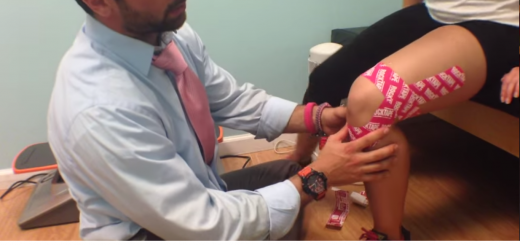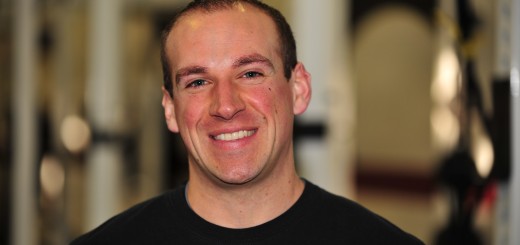You can’t fire a cannon from a canoe
While it’s commonly thought that runners endure low-load repetitive stresses as they rack up the miles, this statement isn’t entirely correct. In fact, lab data indicates that runners routinely experience loads of approximately 2.5-3x their body weight each and every step. And these loads increase to 6-8x body weight at the acceleration phase in sprinters and team sports. If you can’t stabilize against these loads, the resulting compensations in form will impact both tissue loading and economy. Said simply, “You can’t fire a cannon from a canoe.”

I’ll let you conjure up the visual of what happens if you try to fire a cannon ball from a very unstable canoe. Having a poor foundation = poor results. But you don’t have to be too imaginative to see how postural alignment issues might affect running. Head down to your local 5K. That runner with excessive lordosis, a forward leaning torso, an asymmetric arm swing, increased rotational movement, or dynamic valgus is crying for help: they really don’t understand how to move. This same runner can perhaps hold a plank for a solid minute, and likely does “core class” twice a week. However, the term “core stability” has been overused with little understanding of its true purpose and correct execution. As leaders in the realm of musculoskeletal care, we must look beyond a single focus and look at the inclusive factors that impact the dynamic postural alignment during running.
People are variable and different, and their running forms should also be variable and different. For example, some people have more lordosis than others, thus they should replicate this postural alignment during running. A runner displaying a “toes-out” foot pattern may simply have external tibial torsion that should be replicated when running. Getting a runner on the examination table allows us to evaluate the components of structural alignment, mobility, and stability that impact how theycan move. A thorough assessment may highlight areas where tissue mobility, length, or baseline strength could be improved.
Teach athletes how to FEEL
But to come full circle and truly optimize gait mechanics, athletes need to understand how they should move. Runners should be able to replicate optimal skeletal alignment and postural responses during ANY task under speed and under load, and in all training and competition environments. Anything less than a true learned behavior in this aspect is a complete failure.
The way to teach proper postural alignment and movement mechanics is to break down a move into its simplest parts (standing, sitting, etc.) and have the athlete maintain proper position statically – giving them something they can FEEL. They should not depend on internal or external visual cues, since they will not have a mirror or time to “watch” themselves in competition environments. Proprioceptive nerves are the fastest relay circuits in the body. When athletes can tap into the “feel”, they become more aware. Many non-contact and instability injuries are the difference between just milliseconds or millimeters. The faster and more readily an individual taps into his/her position sense, the better they find the ideal alignment, and maintain this position under stress and speed. If an athlete can find and maintain ideal position/form under low stress, but adopts compensated position in high exertion or speed situations, he/she has failed to truly learn the skill of correct movement.
Motor learning research supports the idea that it’s better to foster success with POSITIVE, rather than negative feedback. Place an athlete in the highest level position that THEY can FEEL cues to find and maintain ideal position. Contrast this with a negative feedback scenario: the athlete is not in correct position. You tell them they are failing over and over. The athlete hears that they are “doing it wrong” but never finds out how to learn the correct skill. They don’t have the opportunity to build cues and strategies, and they are dependent on external feedback. And it’s impossible to talk an athlete through every footfall of a training run, or every play of a soccer game!
Positive feedback learning
In the initial phase of feedback training, an athlete is able to feel subtle cues, and must devote time and attention to the “new sensation”, which acts as a reinforcement. Since they must devote cognition to this learning process, they may be slow, clumsy, and inefficient at learning new tasks. Of note – it takes about 4,000 – 6,000 reps to build a new muscle memory (called a motor engram). This is called the COGNITIVE PHASE.
With practice, learned behavior tends to form associations – for example, “Every time I land, I think about X, which reminds me to keep my knee over my second toe, which improves my landing mechanics.” During this period, the athlete begins to get better at filtering cues, and maintains a position or alignment more efficiently. But this movement pattern is still not automatic, and requires “background through processing.” This is called the ASSOCIATIVE PHASE.
As practice continues, learned behavior improves and becomes a habit. A point is reached where the “new” position/alignment/movement pattern becomes all the person knows, and the previous “incorrect” position seems foreign – and even wrong. At this point, movement economy becomes perfect, as a result of a better biomechanical position (from the perspective of lever arms, center of mass location, and temporal-spatial movement), which means improved performance, lower tissue loads and minimum risk of injury. This is called the AUTONOMOUS PHASE.
To summarize, proper dynamic postural alignment is a critical factor in achieving stability under the stresses of running. It’s a combination of mobility, stability, and learned behavior. Place your athletes in situations where they feel success, and progressively increase difficulty load, intensity, and volume as they develop and adapt their skill level.
Watch a clip from Jay’s upcoming course series on Running Biomechanics as he demonstrates the Bridge Test as a way to assess and teach patients to move from the hips while keeping spinal stability
Original Article by Jay Dicharry at MedBridge.com





